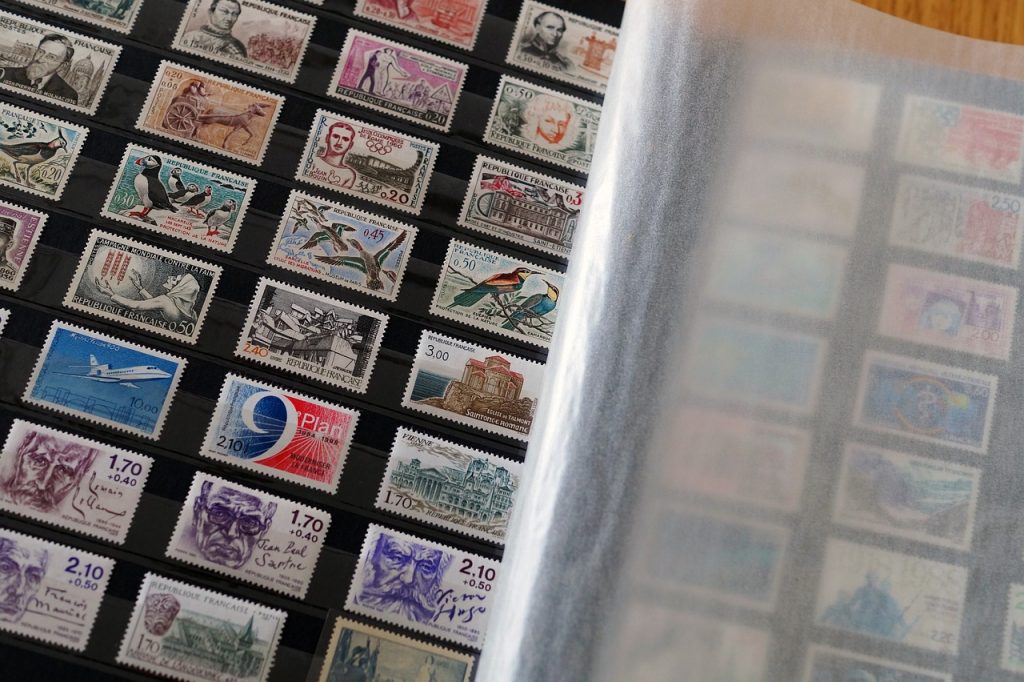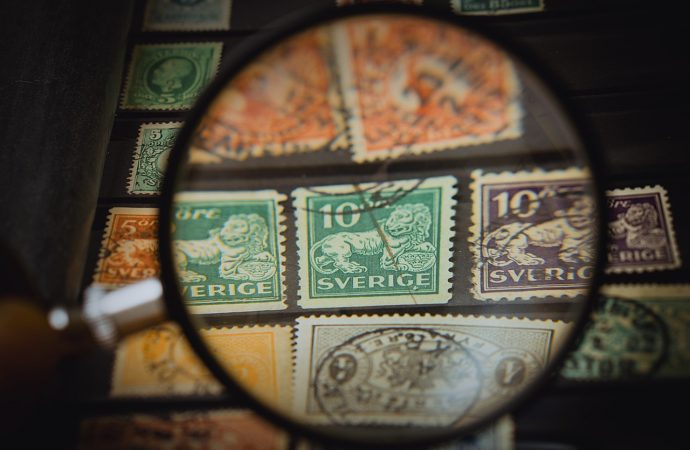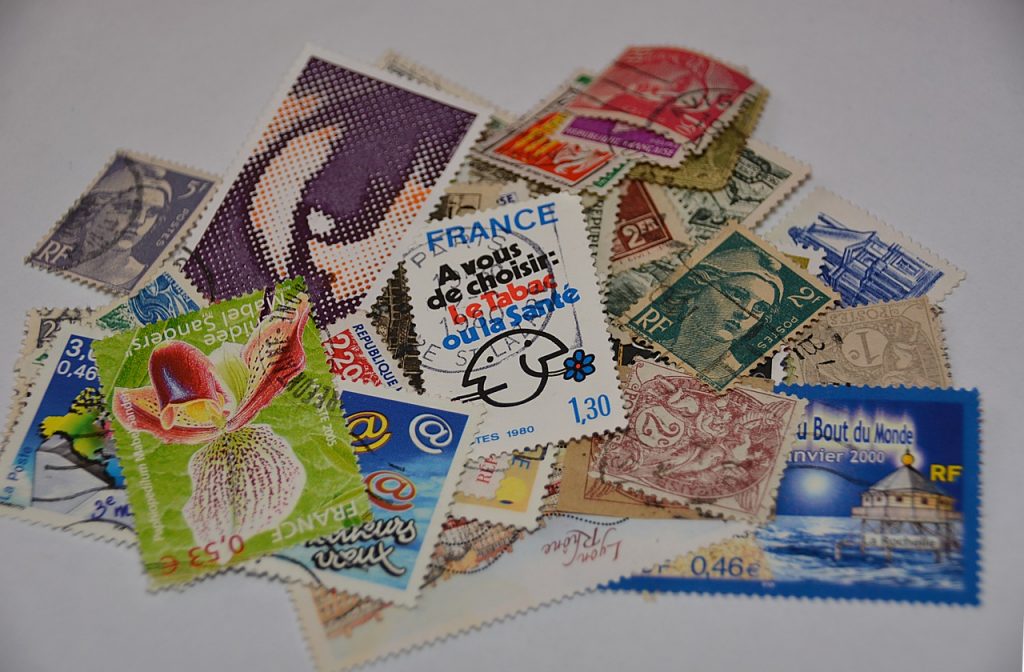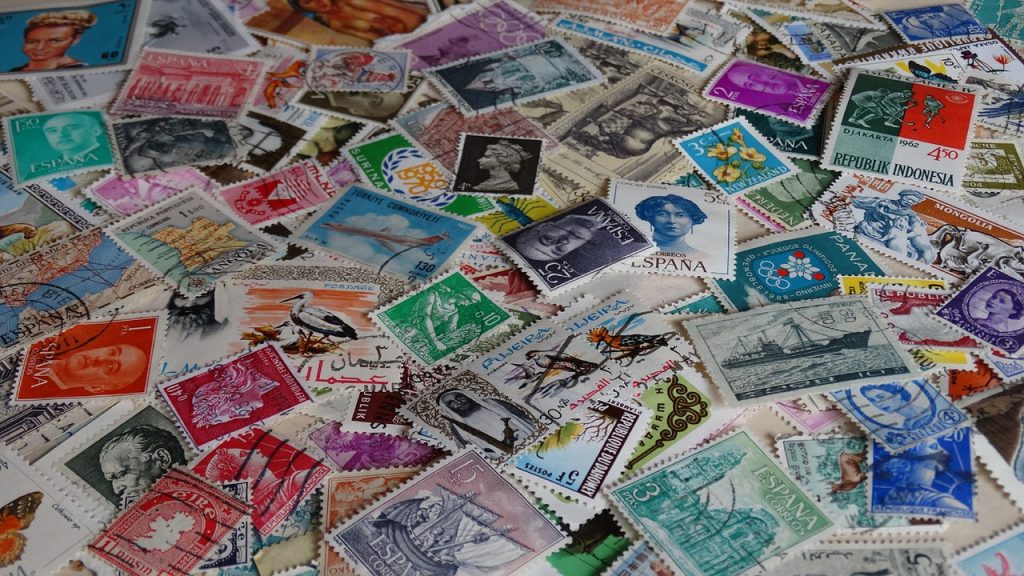Stamp collecting is more than just a hobby; it’s a passion that has been shared by people all around the world for centuries. Whether it’s the intricate designs, historical significance, or simply the thrill of the hunt, there’s something about stamps that captivates collectors. In this blog post, we’ll take a deep dive into the
Stamp collecting is more than just a hobby; it’s a passion that has been shared by people all around the world for centuries. Whether it’s the intricate designs, historical significance, or simply the thrill of the hunt, there’s something about stamps that captivates collectors. In this blog post, we’ll take a deep dive into the world of US stamp collecting and provide expert tips to help you get started or take your collection to the next level. From understanding the origins of stamp collecting to identifying stamps and preserving your collection, we’ve got you covered. We’ll also explore where to find rare stamps and how to determine their value. Plus, we’ll highlight some of the benefits of joining a stamp collecting club. So grab your magnifying glass and get ready to unlock the fascinating world of US stamp collecting!
The Origins of Stamp Collecting
Stamp collecting has been a cherished hobby for centuries, tracing its origins back to the 19th century. Initially gaining popularity in Europe, it soon captivated collectors worldwide. In 1840, the issuance of the United Kingdom’s Penny Black, the first postage stamp, ignited a fascination with collecting stamps. Stamp collecting offers a remarkable avenue to delve into history, culture, and art through the study of postage stamps. Over time, this pastime has evolved, with enthusiasts focusing on various themes, countries, or specific periods. It continues to be a delightful journey of exploration.
The Significance of Stamps in History
Stamps have played a significant role in documenting historical events, notable figures, and important milestones throughout history. Often reflecting the political, social, and cultural climate of their time, stamp designs provide a unique window into the past. Stamp albums serve as visual timelines, enabling collectors to trace the history of a country or region through its postage stamps. The stories behind specific stamp issues and the people or events they commemorate are sources of joy for many collectors. Stamp collecting not only preserves and appreciates the rich history of postal systems and communication but also acts as a supplement to traditional historical records.
Old or young there is never a bad time to start stamp collecting.
Stamp collecting is a hobby that transcends age barriers, making it accessible and enjoyable for both young and old enthusiasts. Starting stamp collecting at a young age not only encourages curiosity but also fosters skills in organization and an appreciation for history. However, the allure of stamp collecting knows no bounds and can be embarked upon at any stage of life. Whether you begin as a child or later in adulthood, every collector experiences the thrill of new discoveries and insights, with each addition to their collection bringing a sense of accomplishment. Engaging in stamp collecting offers a peaceful and educational activity that allows individuals to disconnect from digital screens and immerse themselves in the physical world of stamps.
 Essential Supplies for Stamp Collecting
Essential Supplies for Stamp Collecting
Stamp collecting requires a few essential supplies to ensure a safe and organized collection. Stamp albums are a popular choice for storing and displaying postage stamps as they provide protection and allow for easy viewing. Stamp tongs with flat, non-serrated tips are necessary for handling stamps without causing any damage. Stamp hinges, small transparent adhesive strips, are commonly used to mount stamps into albums. Additionally, a magnifying glass or stamp loupe is essential for examining stamp details, watermarks, and other features. Stamp catalogs, like the Scott Stamp Catalog, offer valuable information on stamp identification, values, and history.
Where Can You Find Rare Stamps?
Stamp shows, exhibitions, and online stamp marketplaces are great places to find rare stamps. Local stamp clubs, estate sales, and flea markets may also have hidden gems. Additionally, stamp collecting conventions attract enthusiasts from all over the world, offering opportunities to discover unique pieces.
How to Preserve Your Stamp Collection
To ensure the longevity of your stamp collection, follow these expert tips. Store your stamps in a cool, dry, and dark environment, away from direct sunlight, extreme temperatures, and humidity. Use stamp albums with acid-free, archival-quality pages to protect them from deterioration and discoloration. When handling stamps, use stamp tongs or washed, residue-free hands, avoiding touching the stamp surface. Instead of self-adhesive stamp mounts, opt for stamp hinges or stamp mounts with archival-quality adhesive. Regularly inspect your collection for signs of mold, pests, or other threats, taking appropriate action to prevent damage.
How to Identify Stamps?
Stamp identification can be done by examining the design, country name, postage value, and unique features. Stamp identifier tools like websites or apps can help. Comparing details to reference materials aids in identification. Joining stamp collecting communities or visiting philatelic resources also provides assistance.
How to Use Catalogs and Reference Books
Stamp catalogs, such as the Scott Stamp Catalog, provide valuable information about stamp values, varieties, and historical context. Reference books, specialized stamp albums, or country-specific stamp guides offer detailed insights and images of stamp issues. To effectively communicate with other stamp collectors, utilize the stamp catalog numbering system, like Scott numbers, to identify and classify stamps.
It is important to regularly update your stamp catalogs and reference books as new stamp issues, varieties, or information may be added over time. Cross-referencing stamp catalogs, auction catalogs, and other philatelic literature can help validate stamp values, rarity, and authenticity.
Tips for Determining Stamp Values
Stamp values are influenced by several factors including condition, rarity, demand, and historical significance. To determine the value of a stamp, it is important to consult stamp catalogs, stamp value guides, or philatelic experts for insights. The condition of a stamp, such as the absence of tears, creases, or discoloration, significantly affects its value. Rarity, which can be determined by limited production, errors, or unique features, can greatly impact stamp values.
Additionally, staying updated on stamp market trends, collector demand, and historical significance through regular research is essential.
 What to Avoid When Collecting Stamps
What to Avoid When Collecting Stamps
When it comes to collecting stamps, there are certain things you should avoid to ensure the longevity and preservation of your collection. Firstly, avoid handling stamps with unwashed, oily, or dirty hands as this can transfer residue and potentially damage them. Additionally, refrain from using tape, glue, or other adhesive materials to mount stamps, as they can cause irreparable damage. It’s also important to avoid storing stamp albums in areas prone to high humidity, extreme temperatures, or direct sunlight, as these conditions can harm stamps. Lastly, never attempt to remove stamp hinges or mounts from stamps, as it can lead to tearing, creasing, or other damage.
Another thing to keep in mind is to steer clear of storing stamp collections in basements, attics, or areas prone to mold, pests, or moisture, as these can cause irreparable damage to stamps. By avoiding these practices, you can ensure the preservation and value of your stamp collection.
The Benefits of Joining a Stamp Collecting Club
Joining a stamp collecting club offers numerous benefits for enthusiasts of US stamp collecting. Connect with like-minded individuals who share your passion for philately and engage in stimulating conversations about this fascinating hobby. By being part of a club, you gain access to a wealth of stamp collecting resources, including stamp supplies, stamp lookup tools, and stamp identifier services.
The club also organizes stamp shows and exhibitions, providing opportunities to expand your stamp collection with unique and rare finds. Learn from experienced collectors who can offer valuable insights into stamp collecting techniques and trends. Stay informed about the latest stamp collecting news, including new stamp releases, stamp collector events, and helpful tips.
You might also be interested in
Explore the renowned Kenmore Stamp albums, known for their high-quality stamp pages and supplies. Discover the allure of first day covers, envelopes with stamps cancelled on their first day of issue, loved by collectors. Dive into the world of flat rate postage, offering convenience with fixed rates for domestic and international mailing. Don’t forget to explore stamp collecting organizations like the American Philatelist Society (APS), providing resources, publications, and networking opportunities. And make sure to check out stamp catalogues like the invaluable Scott stamp catalogue, offering detailed information, images, and stamp values.
World’s rarest stamps
The realm of stamp collecting boasts some truly extraordinary rarities. One standout is the British Guiana 1c Magenta, famously celebrated as the most valuable stamp in existence, with only a solitary copy known to exist. Equally remarkable is the Treskilling Yellow, an exceedingly scarce Swedish stamp that stands out due to a production error that resulted in a yellow hue instead of its intended green.
Stamp collectors also covet the Inverted Jenny, a prized US stamp adorned with an upside-down airplane design, stemming from a printing mishap. The Basel Dove, Switzerland’s inaugural stamp, is another infrequently encountered treasure due to its elaborate artistry and limited printing. Lastly, the Hawaiian Missionaries, a series of stamps issued during the mid-19th century, are strikingly scarce and hold immense value among collectors.
The Most Expensive Stamp Ever Sold
The world of stamp collecting holds many surprises, especially when it comes to the most expensive stamps ever sold. One such stamp is the British Guiana 1c Magenta, which broke records by selling for an astounding $9.5 million in 2014. Another notable stamp is the Treskilling Yellow, which holds the title for the most expensive stamp sold at auction, fetching a staggering $2.3 million. The Inverted Jenny is also highly valuable, with its inverted airplane design selling for $977,500.
Collectors also covet the Penny Black, the world’s first postage stamp, which has sold for $3,000. Lastly, the rare Mauritius “Post Office” stamp from the Indian Ocean island sold for $1.2 million. These stamps are not only valuable but also fascinating pieces of history, captivating collectors worldwide.
 Unusual US Stamps of the 20th Century
Unusual US Stamps of the 20th Century
The 20th century saw the issuance of several unusual US stamps that caught the attention of stamp collectors. One such stamp was the Elvis Presley stamp, released in 1993. This stamp featured the iconic singer and quickly became one of the best-selling commemorative stamps in U.S. postal history. Another notable stamp was the Legends of Baseball stamp, issued in 2000, which celebrated some of the greatest baseball players, including Babe Ruth, Lou Gehrig, and Jackie Robinson.
Stamp collectors also have a fondness for the Lunar New Year stamp series, featuring different animals from the Chinese zodiac. Each year, a new design is released, making it a favorite among collectors. The Flags of our Nation stamp series, issued from 2008 to 2012, provided a unique collecting opportunity. These stamps depicted the flags of all 50 U.S. states, as well as the U.S. flag itself. Finally, the Scooby-Doo stamp, issued in 2018, appealed to both stamp collectors and fans of the beloved cartoon character.
Frequently Asked Questions
How to start Stamp Collecting?
To start stamp collecting, first decide what kind of stamps you want to collect, such as by country, time period, or theme. Then, gather the necessary supplies like stamp albums, hinges or mounts, and a magnifying glass. Acquire stamps through purchasing from dealers, attending stamp shows, or trading with other collectors. Lastly, research and learn about the history and significance of the stamps in your collection.
How do I know if my stamps are valuable?
To determine if your stamps are valuable, consider factors like rarity, condition, and historical significance. Utilize stamp catalogs or online resources for valuation. If you suspect high value, seek professional appraisal. Remember, not all stamps are valuable; some carry sentimental rather than monetary worth.
How do you determine the authenticity and condition of a US stamp?
To determine the authenticity and condition of a US stamp, examine its perforations, watermarks, and paper texture. Assess factors like centering, gum condition, and any damage or repairs. Use a magnifying glass to closely examine for flaws or signs of alteration. For a more accurate assessment, consult a professional stamp appraiser.
What are the most valuable US stamps for collectors?
The world of US stamp collecting offers a treasure trove of valuable stamps. Among them, the 1918 Inverted Jenny stamp stands out, with a single stamp selling for over $1 million. Other valuable stamps include the 1869 Pictorials and the 1893 Columbians. Keep an eye out for well-preserved and rare limited edition or error stamps.
Is stamp collecting dying out?
While stamp collecting is not as popular as it once was, it is still enjoyed by many individuals. Factors such as digital communication and online marketplaces have contributed to its decline. However, there are still active stamp collecting clubs and organizations worldwide. The value of rare stamps has also increased, making it a potentially lucrative hobby.
What resources are available for US stamp collectors, such as clubs or online forums?
There are various resources for US stamp collectors, like clubs and online forums. Well-known clubs include the American Philatelic Society and United States Stamp Society. Online platforms like Stamp Community Forum and Stamp boards offer spaces for collectors to connect and exchange information. Social media groups on platforms such as Facebook also cater to stamp collectors.
Conclusion
In conclusion, stamp collecting is not just a hobby; it’s a gateway to history and culture. The joy of discovering rare stamps and learning about their significance in different eras is unparalleled. To embark on this journey, you’ll need essential supplies and the knowledge to identify and preserve your collection. Utilize catalogs and reference books to enhance your understanding of stamps and their values. Avoid common pitfalls and mistakes that collectors often make. Additionally, consider joining a stamp collecting club to connect with fellow enthusiasts and gain access to valuable resources. Expand your horizons by exploring the world’s rarest stamps, the most expensive stamp ever sold, and the unusual US stamps of the 20th century. Happy collecting!

 What to Avoid When Collecting Stamps
What to Avoid When Collecting Stamps Unusual US Stamps of the 20th Century
Unusual US Stamps of the 20th Century

















Leave a Comment
Your email address will not be published. Required fields are marked with *